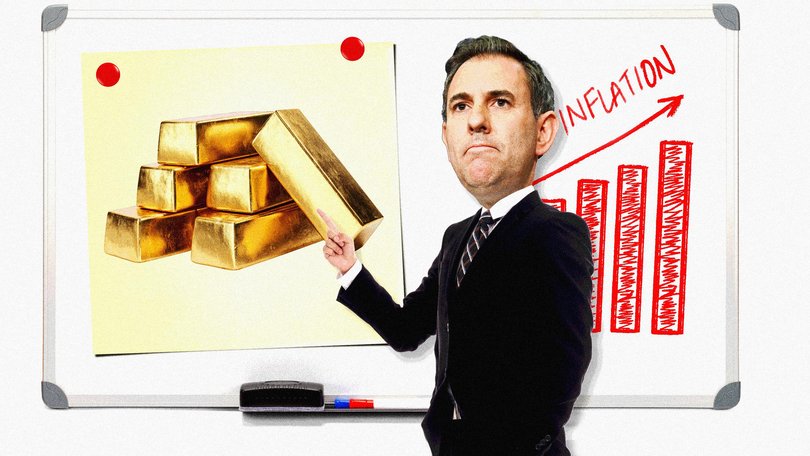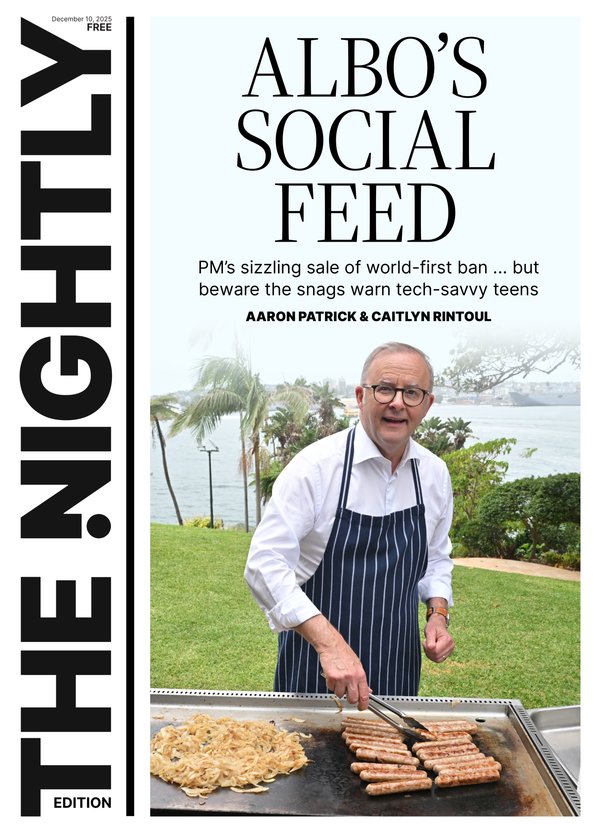AARON PATRICK: Facing an inflation breakout, Treasurer Jim Chalmers deflects

Treasurer Jim Chalmers wants you to be worried about the world, presumably because he hopes it will distract Australians from a new and serious problem at home: inflation.
Dr Chalmers on Wednesday revealed that one of his daily routines is to check international commodity and currency prices. Recently, gold caught his attention as it emerged as the world’s hottest investment.
The precious metal, which has little practical use beyond jewellery, is one of history’s great speculative assets, sensitive to perceptions about the stability of the world.
Sign up to The Nightly's newsletters.
Get the first look at the digital newspaper, curated daily stories and breaking headlines delivered to your inbox.
By continuing you agree to our Terms and Privacy Policy.“We watch this with interest because,” Dr Chalmers told a business group in Canberra, “historically spikes in the price of gold have been a symptom of a big event or more substantial global economic shock.”
After recalling several international financial crises, Dr Chalmers said international counterparts he met on a recent trip overseas are worried an economic crisis might be coming — and the gold price is a warning.
“What came through clearly in almost every conversation was that risks to the global economic outlook are accumulating — from every angle, all at once,” he said. ”Investors are cautious. Capital is jumpy. And uncertainty is more persistent. This volatility has been normalised but not neutralised.”
Statement of the obvious
Dr Chalmers may have sounded profound, informed and thoughtful. But his assertions were statements of the obvious mixed with selected facts. Threats to economic growth never end. Investors are always cautions. Capital never stops moving.
Despite challenges, the world is in a bull market. US shares have doubled in five years. Share volatility is down. Global inflation is slowing. International trade is expanding. Despite queues outside a gold-bullion store in Sydney’s Martin Place, investors are optimistic.
Two weeks ago, the International Monetary Fund upgraded its global growth forecasts in a report prepared for a meeting of finance ministers in Washington, including Dr Chalmers.
The Treasurer’s warnings aren’t new. What was striking was the chutzpah. As Wednesday’s inflation figures for the three months ending September 30 demonstrated, the primary economic threat to Australia is domestic, not external.
On an annual basis inflation accelerated from 2.1 per cent to 3.2 per cent, a 52 per cent jump in three months. What looks like an inflation breakout could have serious consequences.
Rate rises?
The first and most obvious is the interest rate cut on November 4 widely anticipated a few months ago is now extremely unlikely. That cut would have saved the average property owner $1700 a year.
Some economists say cuts are unlikely for the foreseeable future, including those at the Commonwealth Bank of Australia. A few even predict the Reserve Bank of Australia will raise interest rates next year to stamp out inflation, a problem Governor Michele Bullock has to fix to protect her professional credibility.
As recently as Monday evening she expressed certainty that the central bank’s three-year campaign to bring inflation under control had succeeded. “I’m really happy with the way that we have managed to get inflation under control,” she told economists in Sydney.
Without advance access to statistics’ bureau data, Ms Bullock did not know that inflation was far from under control.
The central bank’s work has been made harder by Dr Chalmers’ budget deficits. With deficits of $152 billion over the next four years, the government’s spending — including corporate bail outs, energy subsidies and student loan forgiveness — has driven demand across the economy. The result is government-made, upward pressure on inflation.
“Had government spent less, then interest rates would already be lower,” independent economist Chris Richardson said earlier this year.
In Parliament on Thursday, Dr Chalmers’ Liberal counterpart, Ted O’Brien, said government spending was at a 40-year high outside of any recessions. Accelerating inflation is now called the “Jimflation Effect”, Mr O’Brien said in question time.
Claiming credit
Inverting reality, Dr Chalmers claims credit for the rate cuts in February, May and August. “The progress we’ve made on inflation has given the bank the confidence to cut rates three times this year,” he said yesterday.
Politically, Dr Chalmers has avoided the consequences of poor policy by projecting an aura of calm competence amid a turbulent world. If the inflation breakout persists, and the Reserve Bank starts increasing interest rates, the popular mood could shift aggressively against him.
Apart from the thousands they will cost regular families every year (while benefitting wealthy, debt-free retirees), rate rises would likely hit the property market, which is highly sensitive to the cost of money.
In a country where the average capital city house is worth $1,236,776, Australians are now be able to buy their first home with a 5 per cent deposit under Labor government subsidies.
Given the high cost of stamp duty in most States, even a small drop in house prices could leave owners with more debt than their properties are worth. Negative equity — every homeowners’ nightmare — could sour the public mood about the economy.
It might also force Dr Chalmers to stop telling scary stories about a world that is in reasonably good shape and help the Reserve Bank lower inflation, rather than the opposite.

